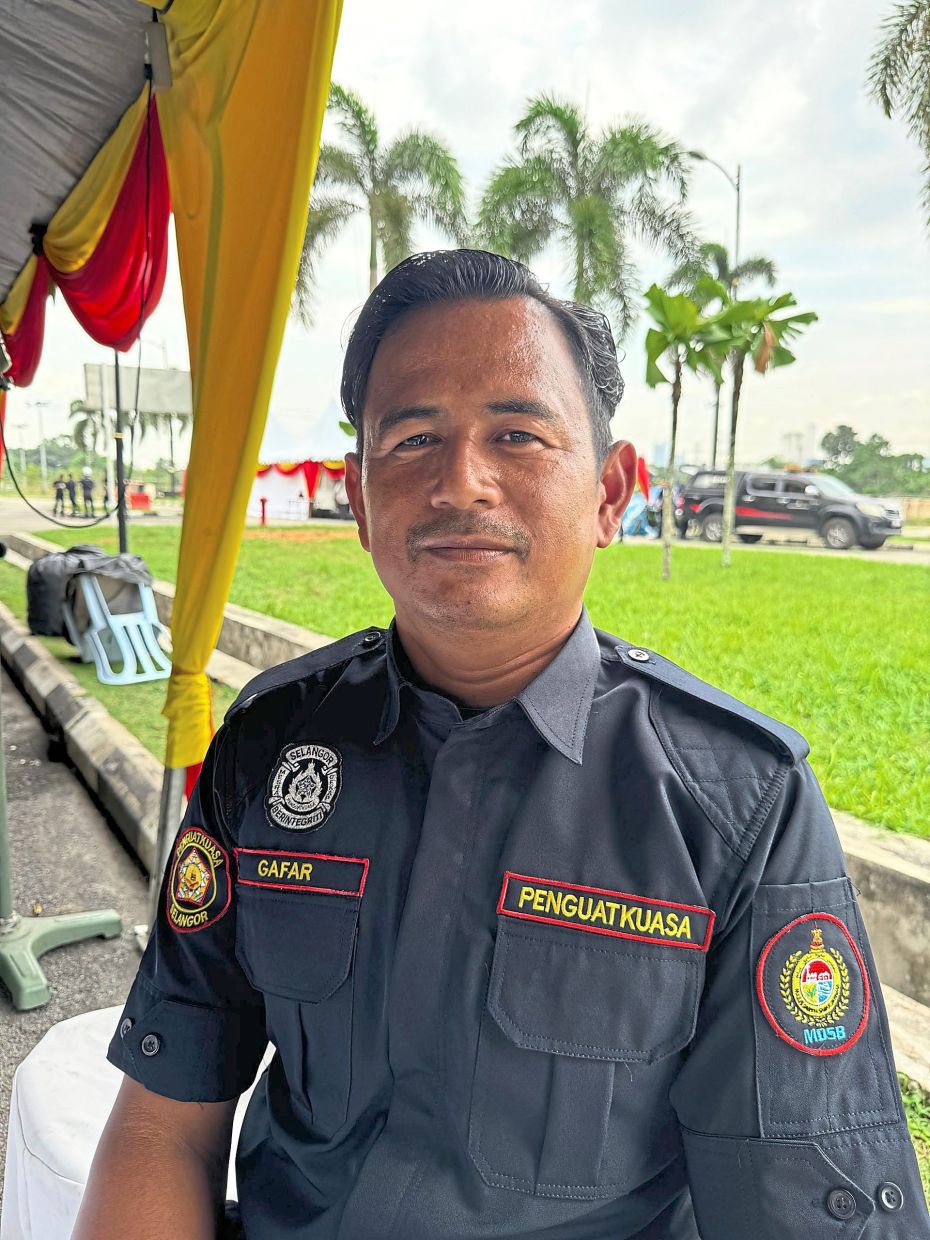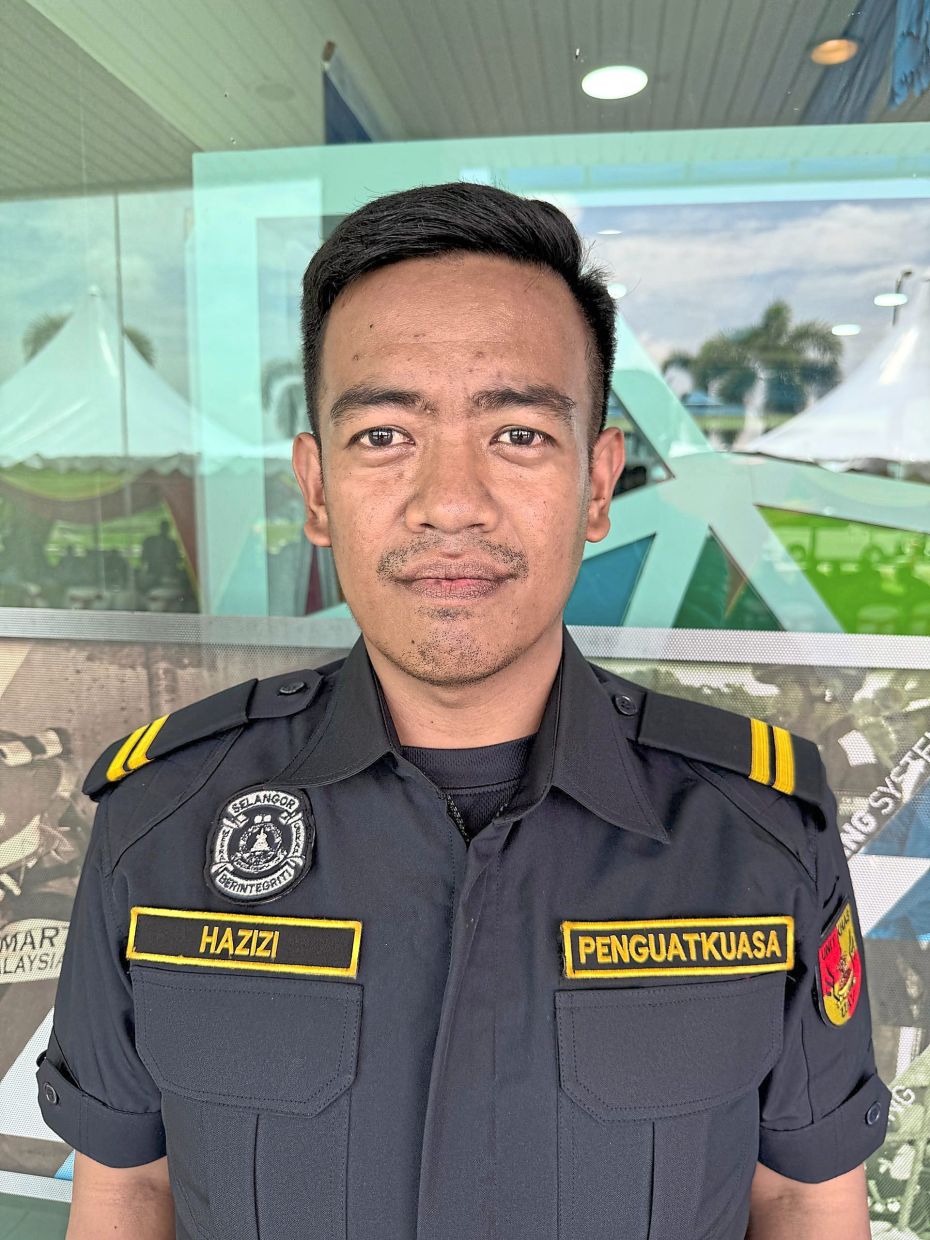Uniformed personnel from various authorities carrying out the rescue simulation at Nadma training ground in Puchong, Selangor. — Photos: GLENN GUAN/The Star
ON TOP of the remnants of a collapsed structure, several men in uniform sifted through the rubble with a palpable sense of urgency about them.
Soon, a team of medical personnel rushed to the site carrying a stretcher to place a body extricated from the wreckage.
This is not a scene from an actual disaster, but a simulation exercise at the National Disaster Management Agency (Nadma) training facility at Pulau Meranti in Puchong, Selangor.
Built at a cost of RM60mil, the training facility comprises various setups such as malfunctioned cable cars and broken underground trains to mimic potential scenarios at disaster sites.
The simulation exercise marked the end of a two-day training for rescue operations at landslide sites, involving 150 personnel from various authorities.
It was conducted by the Special Malaysia Disaster Assistance and Rescue Team (SMART), a special unit under Nadma.
The training also featured theory lessons to give participants an idea of the challenges that they would have to face during such rescue missions.
Among those involved in the training were representatives from Selangor’s local councils, land and district offices, Fire and Rescue Department, Civil Defence Force and the police.
Enhancing preparedness
The rescue programme was part of Selangor government’s efforts to prepare against possible landslides in view of the upcoming northeast monsoon season.
A recent forecast by the Malaysian Meteorological Department (MetMalaysia) said the wet season was expected to bring about four to six episodes of heavy rainfall.
It was reported that the northeast monsoon would last from November until the first quarter of next year.
Selangor youth, sports and entrepreneurship committee chairman Mohd Najwan Halimi said the training was a collaboration between the state’s disaster management committee and agencies from Japan.
“It is not limited to natural disasters, as we have also had training on how to respond if security assets in Selangor are threatened.
“We focus on aspects of crisis management and improving preparedness in dealing with emergencies,” he said when met at the ceremony to mark the end of the training in Pulau Meranti.
Accompanying him was Nadma (Operation Implementation Department) deputy director Meor Ismail Meor Akim.
Mohd Najwan said Selangor government would consider holding training for other types of natural disasters.
“Last year, we held a training programme at Ampang Pecah in Kuala Kubu Baru, focusing on floods.
“If a natural disaster were to happen, at least we are prepared,” he said.
Landslide hotspots
Many landslides have happened in Selangor over the years, causing deaths and damage to properties. (See graphic)
In December 2021, the Mineral and Geoscience Department said 38 areas in the state were found to be landslide-prone, with seven of them classified as critical.
On Dec 16, 2022, a landslide at a Batang Kali campsite claimed 31 lives and injured eight.
Another landslide in Taman Bukit Permai, Ampang, on March 10 that year, killed four people and destroyed 15 homes and 10 vehicles.
Perhaps the most devastating incident occurred in December 1993, when one of the three 12-storey residential blocks of Highland Towers in Hulu Kelang collapsed, claiming 48 lives.
Some 500 rescue personnel from Singapore, Japan, France, United Kingdom and United States helped in the search for the victims.
This tragedy led to the formation of SMART on Aug 1, 1995, according to information published on Nadma’s website.
“The Highland Towers incident exposed Malaysia’s shortcomings in dealing with major landslides, as it forced us to seek help from other countries.
“SMART is mandated to carry out search and rescue operations, as well as prepare the necessary equipment,” Nadma stated.
SMART was first placed under the National Security Council’s purview, but later parked under Nadma on Oct 1, 2015, following a Cabinet decision.
Valuable insights
Participants of the training programme said it gave them an insight into the difficulties faced during rescue operations, which are different from their usual job scope.
Shahrul Jailani, who serves under the Sepang Municipal Council’s Special Action Squad (Pantas), said the programme was a platform to build rapport with counterparts from other local authorities.
“We also learned what to report at the command outpost, which is usually set up to coordinate the operation and report updates.
“It is different from my regular tasks with the Pantas Squad, where we usually deal with floods and fallen trees,” he said.
Klang Royal City Council’s (MBDK) Mohd Shahdan Mohd Zakaria, who is the coordinator of MBDK Pantas Squad, said the training shone a light on the workflow at disaster sites.
“Usually the (disaster) site is divided into three zones – green, yellow and red – depending on the danger level.
“Local councils’ personnel are normally limited to the green and yellow zones,” he said.
According to a frequently asked question (FAQ) document by Nadma, only rescuers with special expertise are allowed in the red zone.
The yellow zone is usually where the rescue outposts are set up.
Permission from the disaster operation commander, usually a high-ranking police officer, is required before entering red and yellow zones.
Counselling and relief centres for victims as well as the tent for media personnel are in the green zone.
Abd Gafar Mohamed Amzah, an assistant enforcement officer at the Sabak Bernam District Council (MDSB), said the training enhanced his knowledge of relief missions.
“We learned about the equipment used and the job scope of other agencies, such as the medical team,” he said.
Abd Gafar had been on several relief missions including to Baling in Kedah, which was hit by floods.
“In previous missions I was supporting other government agencies by distributing supplies to victims and doing cleanups.
“The training taught me how to become a first responder,” he said, adding that participants were also trained in various rescue techniques.
Echoing these sentiments was Mohammad Hazizi Mohamad Khalid who is an enforcement officer at Selangor’s state disaster management unit.
“We usually record distress calls and relay the information to the relevant authorities for further action.
“However, we do occasionally go on operations on the ground such as during floods and landslides,” said Mohammad Hazizi who is proud to be given a platform to do good.
















